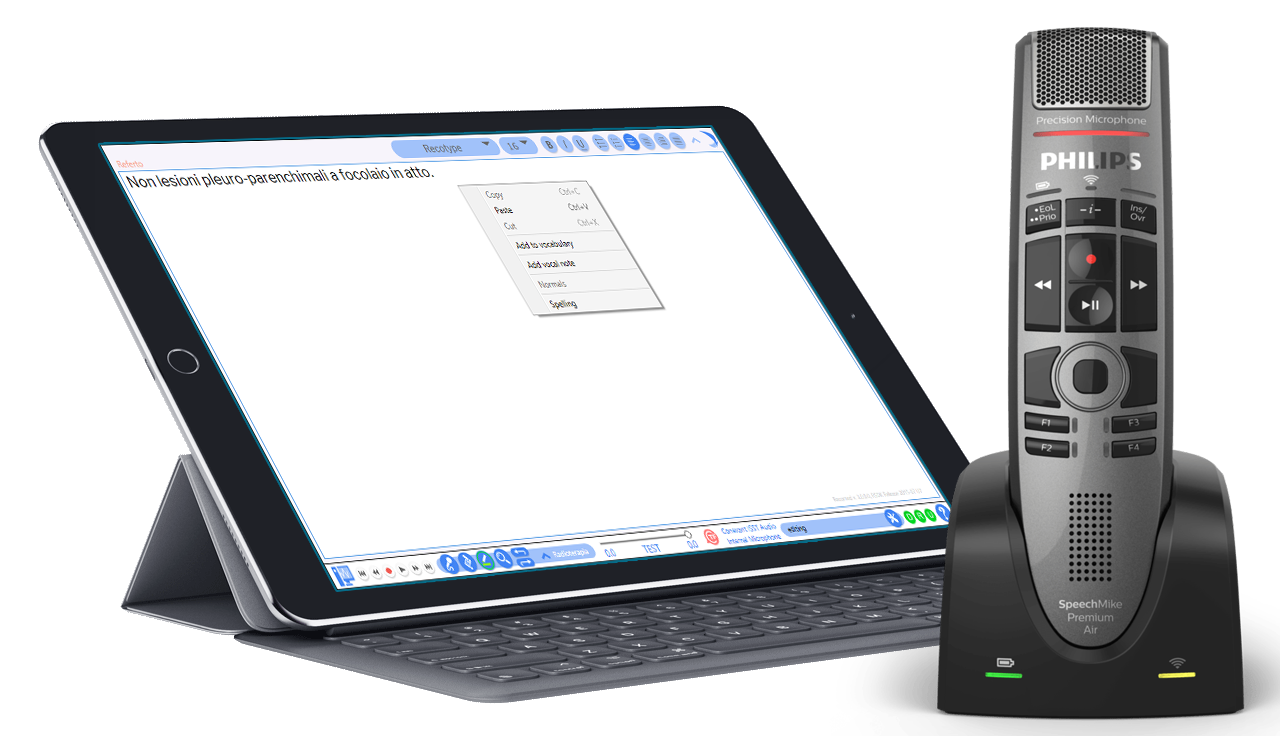Audio Capture Devices
A Thoughtful Guide to Choosing a Microphone

Quasi tutti i microfoni che si utilizzano con un personal computer sono microfoni a condensatore, basati su un elettrete e funzionano utilizzando un materiale dielettrico permanentemente caricato elettricamente, che modifica il proprio voltaggio quando sollecitato da onde sonore.
In genere includono un pre-amplificatore che a sua volta richiede una piccola alimentazione. L'alterazione del voltaggio causata dalle onde sonore (un segnale analogico) viene quindi convertito in segnale digitale tramite una scheda audio. I microfoni basati su questa tecnologia possono variare:
Microfoni USB
Microfoni non USB
Microfoni con pulsanti di controllo
Microfoni a cuffia con fili
Microfoni a cuffia senza fili
Microfoni a mano (handheld)
Microfoni con supporto da tavolo
USB o non USB è la prima importante distinzione. Tutti i microfoni, come abbiamo detto, creano un segnale analogico che dev'essere digitalizzato per essere utilizzato per il riconoscimento vocale. La conversione può avvenire tramite una scheda audio che può essere interna o esterna al computer. L'utilizzo di microfoni USB che effettuano la conversione da analogico a digitale all'esterno del computer comporta alcuni vantaggi:
la scheda audio USB (che può essere contenuta nel microfono stesso) effettua la digitalizzazione al di fuori di un PC al cui interno i campi elettrici potrebbero inquinare la qualità del risultato;
le schede audio esterne e dedicate sono disegnate per la digitalizzazione dell'audio e forniscono il voltaggio corretto per il microfono e garantiscono un risultato migliore;
l'utilizzo di una scheda audio esterna, utilizzabile su diversi computer, garantisce la stessa qualità anche su macchine differenti.
L'utilizzo di microfoni con una scheda audio esterna e dedicata non è essenziale, ma altamente consigliabile. Molti microfoni, sia con che senza fili, includono una scheda audio USB (incluso lo SpeechMike di Philips). Nel caso in cui si decida di utilizzare un microfono che non include una propria scheda audio, si consiglia di utilizzare una scheda USB esterna.
Microfono da impugnare o a cuffietta: è comprensibile che molti non gradiscano l'idea di indossare una cuffietta, ma è certo che tale dispositivo consenta di avere le mani libere. Una cuffietta può non essere la migliore soluzione per il medico che si appresta a dettare i referti in sedute di dettatura molto brevi. E' inoltre il caso di ricordare che la maggior parte dei radiologi negli anni si è abituata a dover lavorare impugnando un dispositivo per la dettatura. I microfoni handheld proposti da reconice, emulano in tutto e per tutto i dispositivi utilizzati abitualmente (dittafoni digitali o analogici), aggiungendo funzionalità interattive molto utili. In genere le funzioni accessibili dai tasti del microfono sono attivabili anche a voce.
In sintesi: Se vi occorre avere le mani libere, utlizzate un microfono a cuffietta. Se le vostre sessioni di dettatura non sono molto lunghe, ma frammentate durante la giornata e siete abituati all'uso di un dittafono o di un microfono, il microfono handheld è più indicato e indubbiamente completo nelle sue funzioni.
Con o senza fili: negli ultimi anni sono aumentati i prodotti basati su tecnologia wireless, sia essa Bluetooth o DECT. Non tutti i microfoni wireless sono creati uguali ed a volte i dispositivi soffrono di episodi di disconnessione o discontinuità nel trasferimento dell'audio, per interferenze con smartphone o altri device. Le soluzioni di riconoscimento vocale, in caso di audio interrotto, hanno la tendenza a sbagliare molto (per effetto del fenomeno dell'error amplification).
Microfoni wireless di qualità hanno un prezzo doppio rispetto a quelli con cavo. Nondimeno i benefici per alcuni sono importanti per i medici che devono dettare pur spostandosi all'interno di una stanza, o dovendo mantenere le mani libere.
E' importante avere due accortezze per i microfoni senza fili:
collegare la base di ricarica ad una fonte di energia sempre alimentata (a PC spento, l'USB potrebbe non esserlo?;
ricordarsi sempre di mettere il microfono in ricarica a fine sessione;
In sintesi: se avete la necessità di dettare a mani libere e senza incespicare nei fili, scegliete con attenzione il Vostro microfono, basandovi sulla qualità della connessione e dell'audio. L'autonomia di utilizzo e la rapidità di carica sono altri elementi essenziali per la scelta.
La scelta del microfono per chi utilizza un sistema di riconoscimento vocale, è critica, per garantire la massima accuratezza, minimizzando gli errori. Sono molti i microfoni che garantiscono ottime prestazioni per l'utilizzo con un sistema di riconoscimento vocale. In molti casi la differenza in accuratezza e cancellazione del rumore di fondo è minimale. In funzione dell'uso e delle necessità di chi utilizza, reconice è in grado di assistere i clienti per la scelta migliore. reconice offre un'ampia gamma di dispositivi audio, per soddisfare le esigenze di tutti i professionisti che utilizzano un sistema di riconoscimento vocale, sia dalla propria postazione di lavoro, che in movimento.




